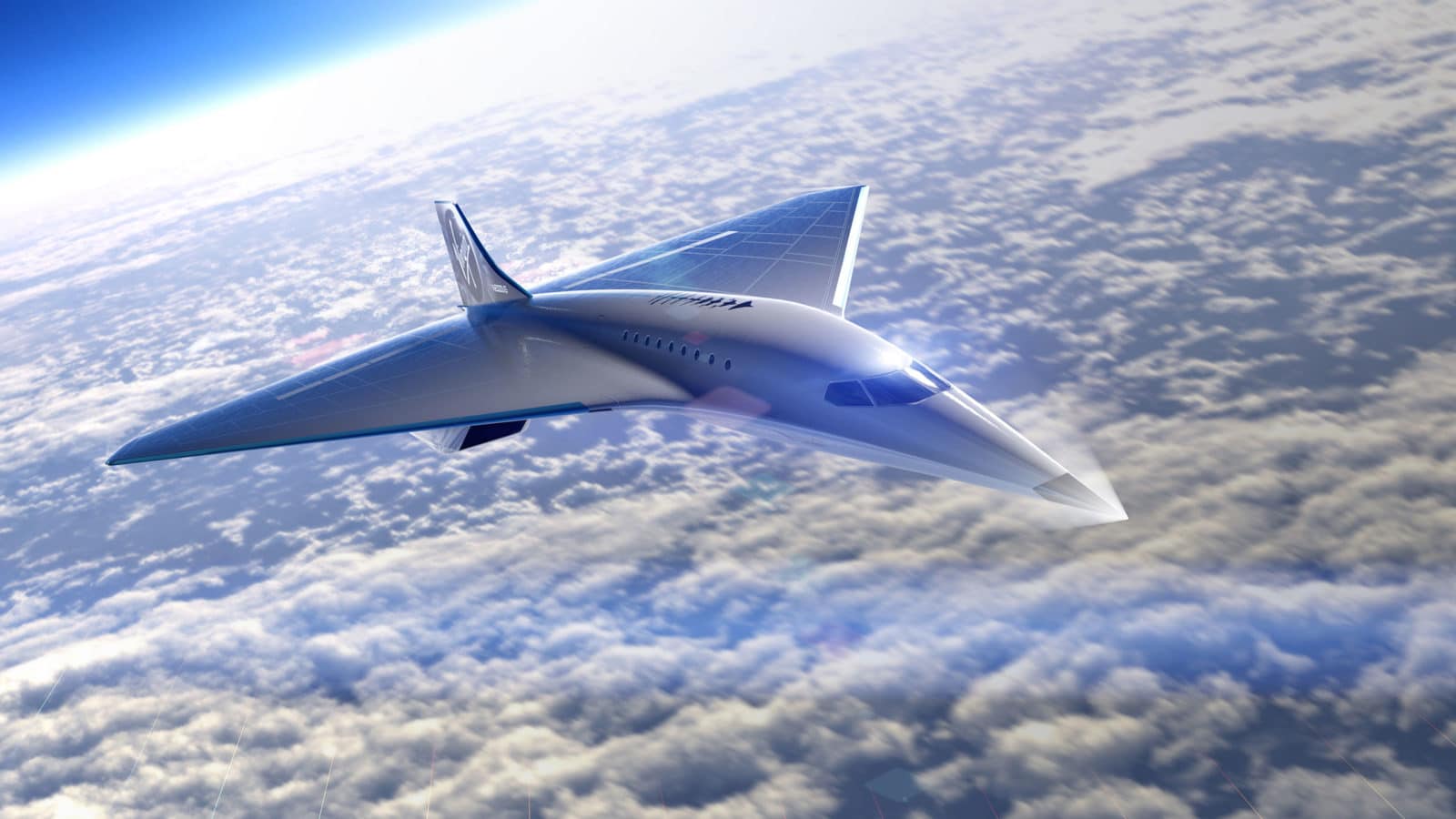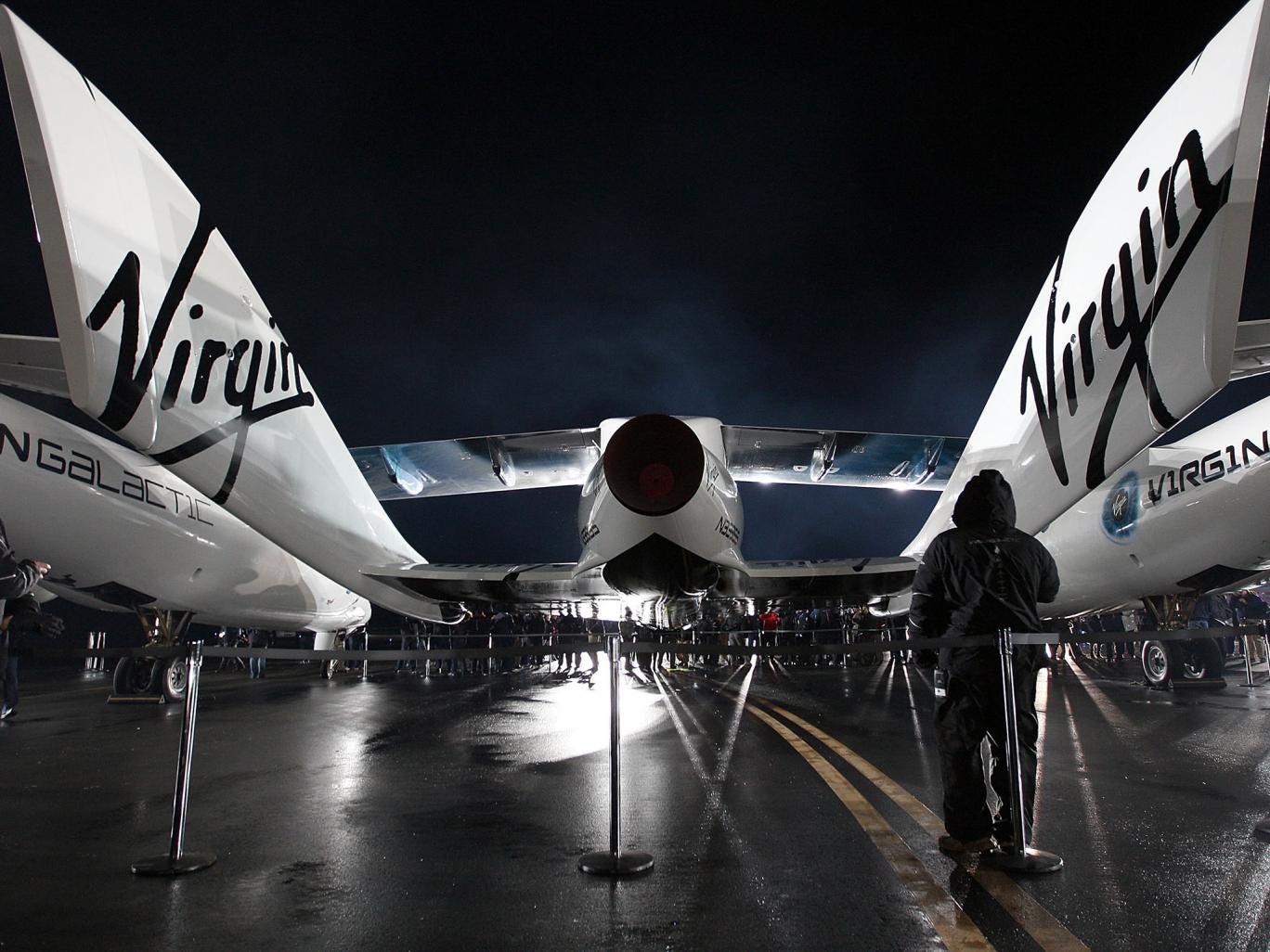Aviation
Virgin Galactic unveils new spaceship 2 ..!

Mojave, CA – February 19, 2016 – Virgin Galactic, the privately-funded space company owned by Virgin Group and Abu Dhabi’s Aabar Investments PJS, today unveiled its newly completed SpaceShipTwo. The rollout ceremony was attended by Sir Richard Branson and his family, Virgin Galactic’s Future Astronauts, and partners.
Professor Stephen Hawking named the new vehicle Virgin Spaceship (VSS) Unity via a recorded speech and said, “I would be very proud to fly on this spaceship.”
The ceremony featured four generations of Sir Richard’s family, from his mother Eve, Richard himself, his son Sam, to his grandchild Eva Deia who celebrated her first birthday by “launching” the spaceship in the traditional way but with milk in place of bubbly. The ceremony also included a video congratulations from Nobel Peace Prize winner Malala Yousafzai emphasizing the importance of space to science and technical education. Photos and speech transcripts can be found here:
 The new SpaceShipTwo is the first vehicle to be manufactured by The Spaceship Company, Virgin Galactic’s wholly owned manufacturing arm, and is the second vehicle of its design ever
The new SpaceShipTwo is the first vehicle to be manufactured by The Spaceship Company, Virgin Galactic’s wholly owned manufacturing arm, and is the second vehicle of its design ever
constructed. VSS Unity was unveiled in FAITH (Final Assembly Integration Test Hangar), the Mojave- based home of manufacturing and testing for Virgin Galactic’s human space flight program. VSS Unity featured a new silver and white livery and was guided into position by one of the company’s support Range Rovers, provided by its exclusive automotive partner Land Rover.
The new vehicle’s build process kicked off in 2012 with each component part undergoing rigorous testing before assembly. With VSS Unity now fully manufactured and unveiled, The Spaceship Company will undertake integrated systems verification, followed by ground and flight tests in Mojave and ground and air exercises at its future home in Spaceport America, New Mexico. The Spaceship Company has already started work on the next SpaceShipTwo.

Based on the smaller 2004 X-PRIZE winning SpaceShipOne designed by Burt Rutan, SpaceShipTwo is designed to take a crew of two pilots and up to six passengers to space. Virgin Galactic’s space flight experience features an air launch followed by a rocket-powered ascent at three and a half times the speed of sound, the silence of space, several minutes of out-of-seat weightlessness and multiple windowed views of our home planet.
Virgin Galactic’s budding commercial spaceline fleet now consists of the spaceship VSS Unity and two dedicated carrier aircraft—the WhiteKnightTwo VMS Eve for human spaceflight and the 747-400 Cosmic Girl for the LauncherOne small satellite launch service.
Virgin Group founder Sir Richard Branson said, “Together, we can make space accessible in a way that has only been dreamt of before now, and by doing so can bring positive cha
Liked it ..?
Share with your friends and family

Aviation
Airbus Enhances A350 Cabin with 10-Abreast Seating

Airbus has announced a new partnership with Jiatai Aircraft Equipment, a Chinese aircraft seating manufacturer, to supply upgraded economy-class seats for the A350 widebody series.
This collaboration, unveiled at the 2024 Airshow China, focuses on developing a newly designed economy seat tailored for the A350‘s New Production Standard (NPS) cabin.
One of the key features of the NPS cabin is the ability to accommodate 17-inch wide economy seats, compared to the previous 16.5-inch wide seats that airlines were limited to in the A350’s earlier configurations.
British Airways Unveils Its Brand-New First Class Cabin for the Airbus A380
This change is made possible by the expanded space in the NPS cabin, which is 35 inches longer and 4 inches wider than the previous version. This extra space is achieved by slightly moving the cockpit wall forward and shifting the rear pressure bulkhead back by one frame.
The wider cabin allows airlines to add up to 30 extra economy seats without compromising comfort. For airlines opting for a 3-4-3 seating layout, the 17-inch wide seats are an excellent choice for a more comfortable passenger experience. However, some airlines, such as Iberia, may choose to retain a 9-abreast layout with wider seats for added comfort.
The NPS cabin also offers enhanced flexibility for airline operators. One major advantage is the ability to easily switch between a 9-abreast and 10-abreast seating configuration without requiring significant downtime for aircraft reconfiguration. Airlines can use the same seat rails, tracks, and IFE interfaces, making the transition smoother and quicker.
Etihad Airways Unveils 10 Exciting New Routes for 2025
In addition, the design of the floor attachments and air-conditioning systems has been optimized for 10-abreast seating, meaning airlines can upgrade their cabins without needing to make substantial modifications to the aircraft’s structure.
Though it’s still unclear when Jiatai’s economy-class seats will be officially added to the A350’s Buyer Furnished Equipment (BFE) catalogue, the collaboration marks a significant step toward enhancing the A350’s cabin offerings.
With this partnership, Airbus is providing more seating options for airlines, ensuring that they can meet diverse customer needs while improving overall operational efficiency.
-

 Aviation2 months ago
Aviation2 months agoMicrosoft Flight Simulator Raises $3 Million to Bring Back the An-225 Mriya
-

 Airlines2 months ago
Airlines2 months agoQatar Citizens Can Travel to the United States Without a Visa
-

 Aviation2 months ago
Aviation2 months agoQatar Airways bans these new Electronic Devices on plane
-

 Airlines2 months ago
Airlines2 months agoJapan Airlines Rolls Out Free Domestic Flights to International Passengers
-

 Travel2 months ago
Travel2 months agoQatar Airways Launches Four Additional Flights from Amsterdam
-

 Defence2 months ago
Defence2 months agoWhich Country Has the Largest Fleet of Fighter Aircraft?
-

 Airport2 months ago
Airport2 months agoWestern Sydney Airport Welcomes Its First Plane After 6 Years of construction
-

 Airlines4 days ago
Airlines4 days agoDAMAC Air: Dubai’s New Luxury Airline Offers Free Flights for Registration








